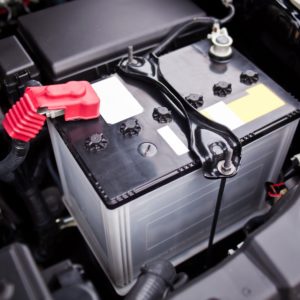If you live in an area with icy winters or cold rainy seasons, preparing for your daily commute can be a chore. You have to make sure that you get the ice or condensation off of your windows. You also have to defrost and defog your windshield, lights, and mirrors so you can see the road ahead and drive safely. Fortunately, most cars come with a defroster. What is this feature and how does it work? Do you really need a defroster for your car? We’ll answer all of these questions and more with this brief guide.
What Is a Car Defroster?
A car defroster helps clear condensation and removes frost from a vehicle’s windshield and windows.
How Do Car Defrosters Work?
Car defrosters work differently depending on where they’re located inside the vehicle. Generally, defrosters work by using heated air or heat grids to prevent condensation from forming on the vehicle’s glass windows and windshield and obstructing the driver’s view.
Typically, when the defroster is in operation, the car’s A/C is also automatically activated to help dehumidify the air inside the cabin. Since the inside of a vehicle has more moisture than the outside, it’s important to get rid of the excess moisture so the defroster can do its job quickly.

What are the Types of Car Defrosters?
There are two main types of car defrosters, and they’re located in the front windshield and the rear window. These defrosters have different modes of operation and work in different ways. Here’s how front and rear defrosters work:

Front Defroster
Front defrosters, sometimes called primary defrosters, use the vehicle’s heating and ventilation system to clear the fog from the windshield and the front side windows. This includes the A/C compressor, which also needs to run to help remove moisture and fogging. Note that if your vehicle’s A/C doesn’t work, your windshield might still fog up even with the defroster on.
These primary defrosters use the HVAC system to draw in fresh air and heat up that air using the vehicle’s heater core. This warm air is then released through the vents to warm the windshield and the side windows. During winter or in rainy weather, this can melt the ice outside and remove the build-up of condensation.
Many vehicles allow you to control the temperature and fan speed when the defroster mode is activated. Some vehicles might also have a setting that directs all the warm air to the windshield to speed up the defrosting and defogging process. In other vehicles, you can split the warm air between the windshield and the floor level.
Rear Defroster
While the front defroster makes use of the vehicle’s heating and ventilation system, the rear defroster uses electricity to heat up the car’s rear windows. The rear defroster switch activates a grid of wires that run across the glass of the rear window, melting frost and ice.
Rear defrosters typically work as soon as they’re switched on while front defrosters might take a bit of time to heat the vehicle’s interior up because they need a warm engine to operate.

Tips On How to Defrost Your Car’s Windows and Windshield
There are a few methods of de-icing your car and defogging your windows more efficiently with the help of your car’s defroster. Start your engine and let it warm up for a few minutes before you go out on your trip to make sure that your windshield, back windows, and side mirrors are properly cleared of frost.
It’s also recommended that you keep a scraper and de-icer inside your car, especially during the winter months. You can use these tools along with the defroster so you can clear your windshield of ice and snow easily.
If your car doesn’t have a defroster, you can turn the heater on instead. Make sure to change the HVAC circulation setting so your vehicle can draw in air from the outside. You should also turn on your air conditioning and open the windows a bit to get rid of the excess moisture inside the cabin.
While there are safe defogging and defrosting methods, there are also potentially unsafe methods that you should avoid. An example of this is using hot water to clear the snow and ice from your windshield and windows during winter. The sudden change in temperature can cause your windows and windshield to crack. Also, try not to use makeshift tools to scrape off the snow and ice from your car to avoid scratching your car’s glass and paint.
Any information provided on this Website is for informational purposes only and is not intended to replace consultation with a professional mechanic. The accuracy and timeliness of the information may change from the time of publication.































